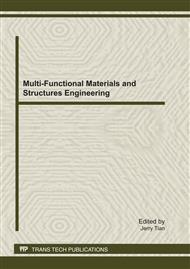p.235
p.241
p.247
p.253
p.259
p.263
p.268
p.274
p.279
Study on Effects of Organic Carbon Emission of Land Use Change in Shenzhen City, China
Abstract:
The effects of terrestrial carbon cycle caused by Land use change on are obvious. Urbanization is an important reason of land use change. Based on the soil and plant data that field sampled, five remote sensing data of 1979, 1989, 1995, 2000 and 2003, the effects on ecosystem organic carbon pool from1979 to 2003 caused by land use change in Shenzhen city are analyzed. The land use changes are mainly occurred between the following 8 land types, farmland, wood land, grass land and construction land. The results show that form 1979 to 2003 carbon emissions caused by land use change in Shenzhen City totally reduced by 337.24 × 104Mg C (1Mg C = 1 × 106g C). The average annual carbon emissions arrive up to 24.09 × 104Mg C. Among them, the emissions caused by the reductions of farmland and forest area are respectively 252.26 × 104Mg C and 111.73 × 104Mg C. The organic carbon increment caused by garden land increase is 47.37 × 104Mg C. The results show that Urbanization process totally is a carbon sink process. The study is valuable for assessing the relations between carbon effects and land development and ecological restoration planning in the process of rapid urbanization.
Info:
Periodical:
Pages:
259-262
Citation:
Online since:
July 2011
Authors:
Price:
Сopyright:
© 2011 Trans Tech Publications Ltd. All Rights Reserved
Share:
Citation:


